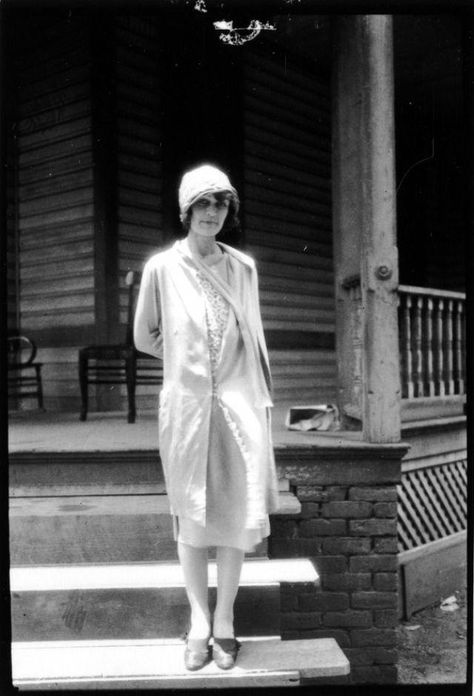I've always loved the fashions of the 1920s. I've never thought I could wear them. Why? Let's look at pics of real people and determine the silhouette. All of these pics appear to be mid-late 1920s.
Dresses:
Coats:
Beach Pyjamas:
What do you notice? I see a lot of straight, boyish shapes. Even older women who would be
considered "stout" are straight. I see no boobs and no hips. This is completely opposite of my curvy shape.
Let's look at this book from 1924 and see some of the advice given in regard to obtaining the proper silhouette:
One passage talked about reducing the bust and hips up to 6 inches. LOL. I'm trying to imagine the corsetry that can do that. This book is actually pretty interesting. It goes into detail on choosing dress styles and adding trim details and such to lengthen the figure.
I'm a firm believer that all vintage/historical clothing requires the correct underpinnings to look authentic. This means making a bunch of under garments before I can get to the fun part of making the frocks!
What will this involve?
Let's look at the different layers:
If you are young with a "boyish"" figure then you can wear tap pants and camisole or a teddy and and a slip. Of course you'll need some kind of garters to hold up your stockings.
Those of us with curves will need an entirely different arsenal of underwear.
First the chemise goes next to the skin if you will be wearing a corset or other "shapewear."
I have a 1922 catalog from a NYC department store which has a lot of options. These little envelope chemises have a piece that goes between the legs from the back and buttons to the front so it's not entirely open. One has potty access by unbuttoning 2 buttons at the lower front.
1924 Butterick Pattern

Next is the corset.
1922 corsets--similar to open bottom girdles in many cases. These are clearly boned undergarments with a lot of structure. Many have inserts of "rubber" elastic and they have suspenders to hold up one's hosiery. Note that most of them are under the bust. If one has a smaller bust than it is contained by the chemise. Otherwise a brassiere will be needed to reduce a full bust.
Brassieres: These are garments with no stretch. Note that they are basically flat with little shaping other than easing at the side seam or bottom. They also have a suspender to hook to the tap pants or garter belt.
Corset brassieres--basically brassieres with suspenders for one's hosiery. They offer no shaping for the hips. There is also a corset belt--what I remember as a garter belt back in the 1960s. These are made of coutil with some having elastic insets. They seem to close with hooks and eyes.
Elastic underpinnings. Note the rows of elastic as apparently the heavy rubber elastic was not made in wide widths. There is also an elastic brassiere to reduce the bust. Because this catalog is from 1922, it appears to have some shaping accessories to appeal to older women who still want to wear their 19teens styles. I assume the bust pads are for this purpose.
Corselettes: These are unboned. They seem to mostly be made of coutil with some having elastic inserts and they are designed to give a straight shape.
1924-25

1928-29 Corset brassieres
1924 brassiere
1928-1929 elastic brassiere
Slips: Slips were straight. Some had slight gathers or pleats at the side, much like a 1 hour dress pattern has (more on that in a later post) These are from the 1924 book above.
Vintage 1920s slip pattern found on Etsy
Stockings: Stockings came in a large variety--silk stockings with seams, cotton stockings, wool stockings, clocked and lace stockings. Here are a few from my 1922 catalog.
I see achieving this silhouette to be a major challenge but I'm going to give it a try!
I will post my progress in another post!




























No comments:
Post a Comment